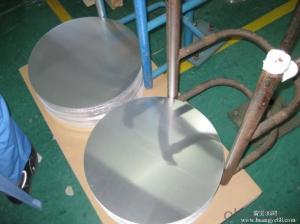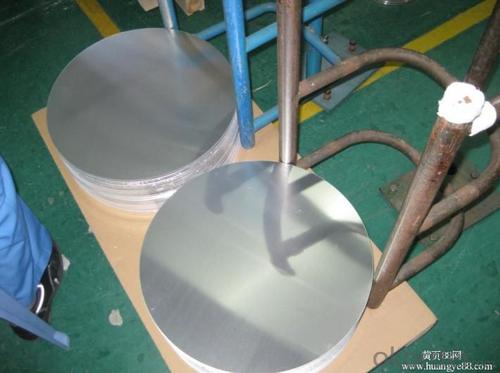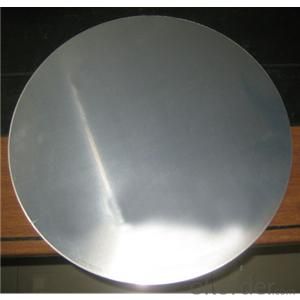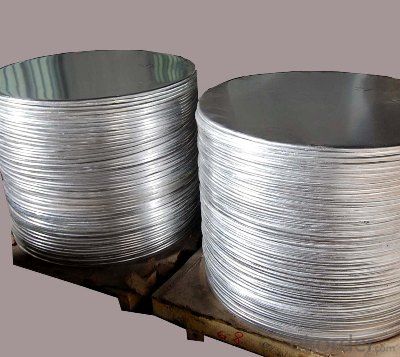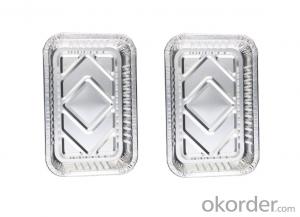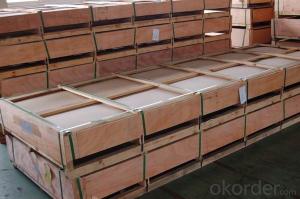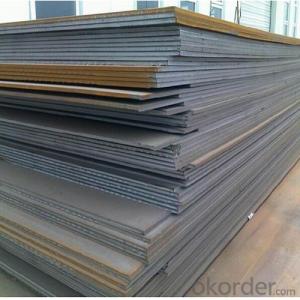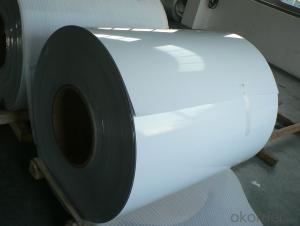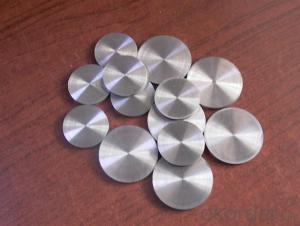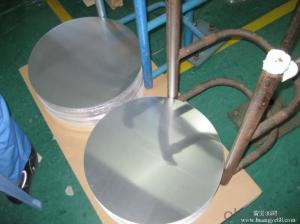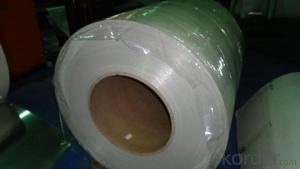Riveting Aluminum Sheets for Spinning Kitchen Ware
- Loading Port:
- Shanghai
- Payment Terms:
- TT or LC
- Min Order Qty:
- 2 m.t.
- Supply Capability:
- 5000 m.t./month
OKorder Service Pledge
OKorder Financial Service
You Might Also Like
Specification
1.Structure of Aluminium Circle for Spinning Kitchen Ware
Aluminium Circle for Spinning Kitchen Ware is one semi-finished aluminium material. This Aluminium Circle is widly used to produce aluminium pot, especially for spinning The alloy AA1050 is widly used in building, industry ect. Its weight is much lower than steel. So many customers choosed aluminium material instead of steel.
2. Main features of Aluminium Circle for Spinning Kitchen Ware
a.Competitive price---We have our own mills and can produce mill finished aluminium coils, so we can control the production cost better.
b.Professional after-sale service---We have more than 15 years exportation experience and you need not worry about the exporation problems.
c.Fast delivery time---We can control the delivery time within 35 days.
3. Image
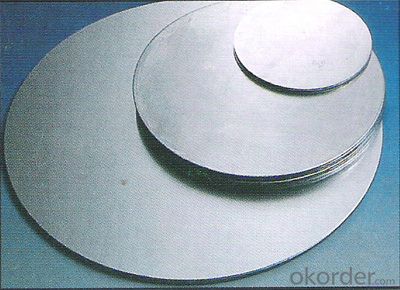
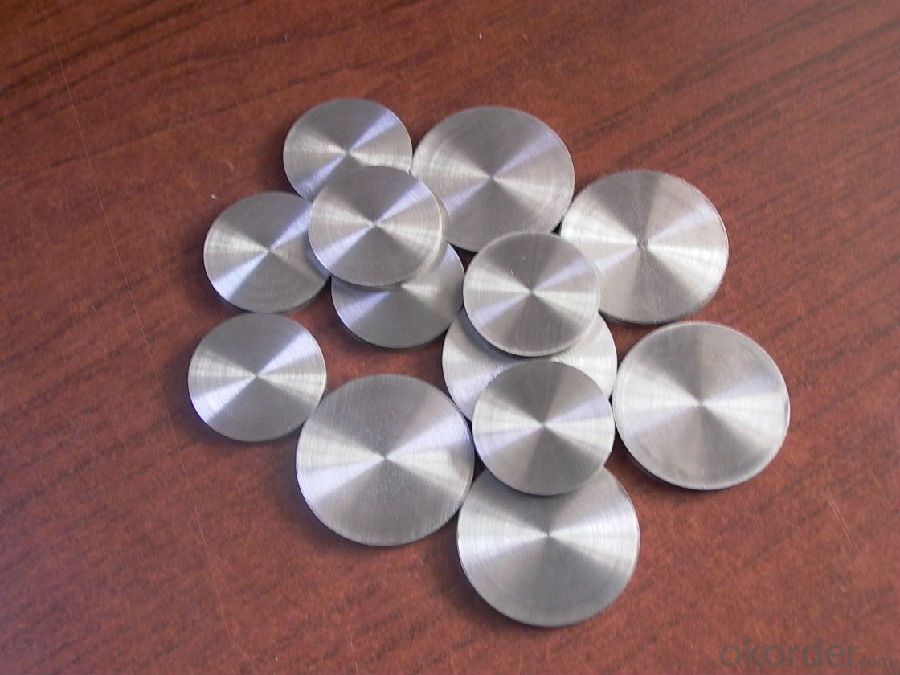
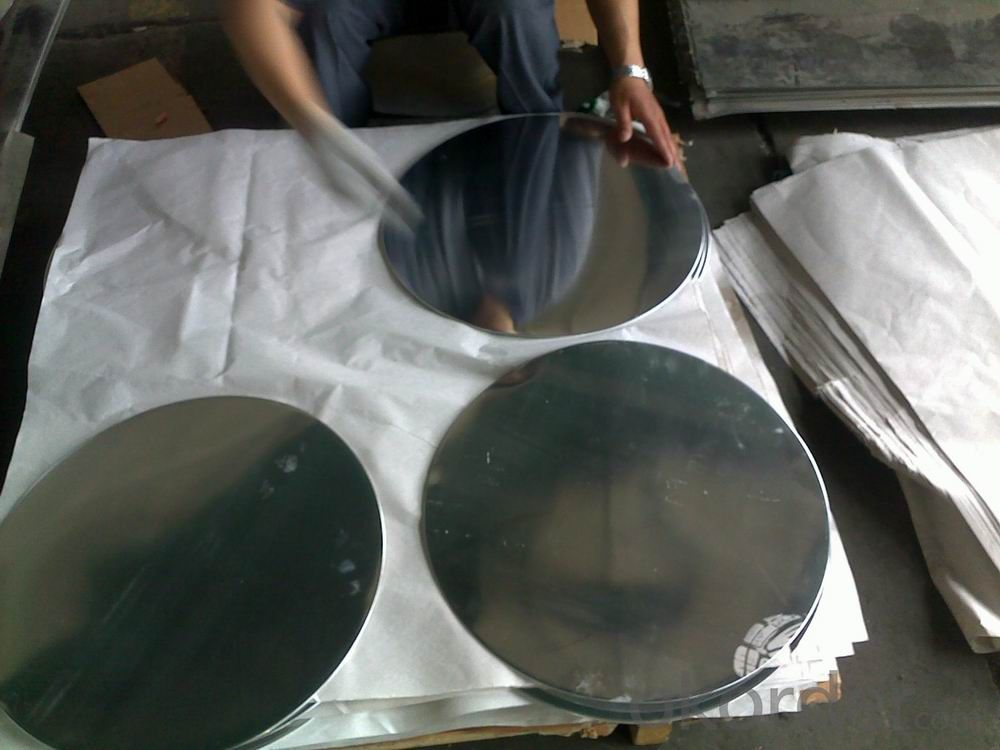
4. Product Specification
| Alloy | Temper | Thickness | Diameter | Weight |
| AA1050 | H14 | 0.2MM-2MM | 100MM-1000MM | 2 TONS |
5.FAQ:
What is the quality standard?
---Usually our standard is GB3880-2006
What is the largest width?
---It is 2300mm
What is the MOQ?
---Usually we can accept 80 tons.
- Q: Are aluminum sheets suitable for electrical connectors?
- Yes, aluminum sheets are suitable for electrical connectors due to their excellent electrical conductivity and corrosion resistance.
- Q: What are the advantages of using aluminum sheets compared to other materials?
- There are several advantages of using aluminum sheets compared to other materials. First, aluminum is lightweight, making it easier to handle and transport. Second, aluminum has corrosion resistance properties, ensuring durability and longevity. Third, aluminum sheets can be easily formed and molded into various shapes, allowing for versatility in applications. Additionally, aluminum is a good conductor of heat and electricity, making it suitable for use in industries such as aerospace and electrical engineering. Lastly, aluminum is recyclable, making it an environmentally friendly choice.
- Q: Is it possible to utilize recycled aluminum scraps as an alternative to purchasing new aluminum sheets for a project?
- <p>Yes, you can use recycled aluminum scraps in your project instead of buying new aluminum sheets. Recycled aluminum is not only environmentally friendly but also cost-effective. It has similar properties to new aluminum, making it suitable for many applications. However, ensure the quality and purity of the recycled aluminum meet your project's requirements. Check for any impurities or inconsistencies that might affect the strength or performance of your final product. If the recycled aluminum is in good condition and appropriate for your needs, it can be a sustainable and economical choice.</p>
- Q: Can aluminum sheets be used in marine environments?
- Yes, aluminum sheets can be used in marine environments. Aluminum is a commonly used material in marine applications due to its excellent corrosion resistance properties and lightweight nature. It can withstand the harsh conditions of saltwater, making it suitable for boat building, marine structures, and other marine-related uses.
- Q: Are the aluminum sheets suitable for HVAC (heating, ventilation, and air conditioning) applications?
- Aluminum sheets are indeed suitable for HVAC applications, as they possess excellent thermal conductivity, corrosion resistance, and are lightweight. The HVAC industry widely favors aluminum due to these attributes. In HVAC systems, these sheets find common use in ductwork, heat exchangers, and air handling units. When it comes to heating applications, aluminum sheets efficiently transfer heat and can withstand high temperatures. Moreover, their resistance to corrosion ensures long-term durability, particularly in moist environments like air conditioning systems. Furthermore, the lightweight nature of aluminum sheets simplifies installation and reduces the overall weight of HVAC equipment. Overall, aluminum sheets prove to be a reliable and versatile material for various HVAC applications.
- Q: What is the typical torsional strength of aluminum sheets?
- The typical torsional strength of aluminum sheets can vary depending on various factors such as the alloy composition, thickness, and manufacturing process. However, aluminum generally possesses good torsional strength, making it suitable for a wide range of applications.
- Q: 6061-T6 can aluminum sheets be bent?
- It can be bent, but the hardness of T6 series is higher, and the edges of the sheets are easy to wrinkle or split
- Q: Are aluminum sheets suitable for decorative screens?
- Yes, aluminum sheets are suitable for decorative screens. They are lightweight, durable, and can be easily customized into various shapes and designs. Additionally, aluminum's corrosion resistance makes it suitable for both indoor and outdoor applications, making it a popular choice for decorative screens.
- Q: Can aluminum sheet be used for cookware?
- Yes, aluminum sheet can be used for cookware. Aluminum is a popular choice for cookware due to its excellent heat conductivity and lightweight properties. However, it is usually combined with other materials, such as stainless steel or non-stick coatings, to enhance its durability and prevent any potential reactions with certain foods.
- Q: Are 101 aluminum sheets suitable for agricultural machinery?
- Yes, 101 aluminum sheets are suitable for agricultural machinery. Aluminum is a versatile and lightweight material that offers several benefits for agricultural machinery. It has excellent corrosion resistance, which is crucial for equipment exposed to various weather conditions and chemicals commonly found in the agricultural industry. The strength-to-weight ratio of aluminum is also advantageous, allowing for increased payload capacity and fuel efficiency. Additionally, aluminum is easily formable, enabling manufacturers to create complex shapes and designs for machinery components. Overall, 101 aluminum sheets provide the durability, corrosion resistance, and versatility required for agricultural machinery.
Send your message to us
Riveting Aluminum Sheets for Spinning Kitchen Ware
- Loading Port:
- Shanghai
- Payment Terms:
- TT or LC
- Min Order Qty:
- 2 m.t.
- Supply Capability:
- 5000 m.t./month
OKorder Service Pledge
OKorder Financial Service
Similar products
Hot products
Hot Searches
Related keywords
